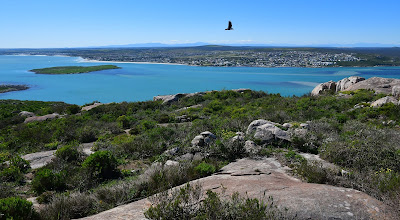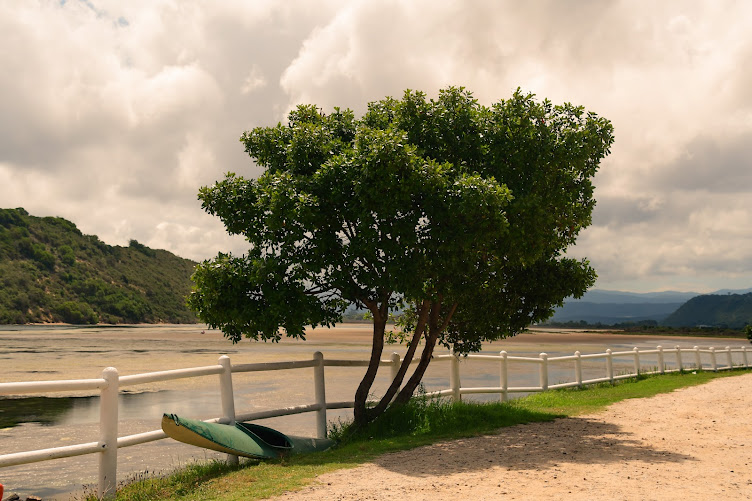14 Reasons to live in South Africa
 |
| Elephants - Addo National Park South Africa |
Ask any proudly South African to
give you reasons to live in South Africa, and they’ll rattle off a long list in
seconds. The examples will range from the extraordinary to the sublime. Fact
is, many of South Africa’s best qualities and attractions can’t be found
anywhere else on earth! Take, for starters, close encounters with the Big 5.
Also, Table Mountain and 11 official languages add their own unique flavor to
South Africa’s cultural melting pot. There is no way we can list everything
that makes South Africa great, but we have done our best in our list of top 14
reasons to live in South Africa:
 |
| Bo-Kaap Cape Town South Africa |
1. More bang for
your buck
Mercer’s 2019 Cost of Living
Survey compared 209 cities worldwide, looking at factors such as housing,
transportation, food, clothing, household goods, and entertainment. Cape Town
came in at number 180, while Johannesburg sits seven places lower at number
185.
2. English is
widely spoken
English is only one of our 11
official languages. Still, it’s arguably the language spoken most often, as
it’s the most widely accepted language for communication in businesses, shops,
tourist attractions, restaurants, and the like.
3. Exceptional
private healthcare
South Africa’s private healthcare
is on par with any of the best in Europe and the United States. The hospitals,
staff, and care given are first class, with plenty of medical aid schemes to
choose from. Here’s something you might not know – people from all across the
world opt to come to South Africa for plastic surgery each year, not only due
to the outstanding quality of our plastic surgeons but also because of the
favorable exchange rate.
4. Awards,
awards, and more awards
South Africa, its cities, and its
citizens win plenty of international awards each year. In 2017, South Africa
was voted the 5th Most Beautiful Country in the World, while Cape Town was
named the World’s Best City to Visit. Our beaches come out tops too. No less
than 46 South Africa’s beaches were deemed worthy of Blue Flag Status for the
2018/2019 season.
5. The 3rd Most
Inclusive Country in the World
 |
| Local artist Cape Town South Africa |
This is another accolade, but one
worthy of special mention. Last year South Africa was named the third most
inclusive country globally, behind only Canada and the United States. These
results are the outcome of an Ipsos Global Advisor survey, and more than 20 000
people took part in it. The areas on which participants were surveyed covered
social acceptance based on religion, immigration, sexual orientation, gender
identity, political views, and criminal background.
6. You’ll barely
miss home
Some urban legends about life in
South Africa never seem to go away. For instance, that everyone in South Africa
has a pet lion/leopard/just about any other wild animal, you can think of.
It’s simply not true!
Often, people have no idea what
to expect. Here’s what we can tell you – South Africa has wifi and fiber, you
can shop in malls and buy from H&M, you can pop into Woolworths, you can
walk into a Mac shop and replace your old MacBook, you can buy top-of-the-range
luxury cars, and you can drink water straight from the tap.
7. People
South Africans are known
worldwide as some of the friendliest, most welcoming people in the world.
You’ll always be greeted with a smile, and a helping hand will be extended
whenever you need it.
 |
| Vendor Bo-Kaap Cape Town South Africa |
8. Unparalleled
beauty
South Africa has some of the most
beautiful and wild beaches on the planet, undulating mountain ranges, lush
forests, and desert skies that turn brilliant shades of amber at sunset.
 |
| Camps Bay South Africa |
9. Fantastic
weather
South Africans enjoy clear blue
skies and abundant sunshine most days of the year. Durban has a tropical
climate year-round, while winter days in Cape Town often reach up to 25C.
Johannesburg sees summer rains, but showers never last long enough to spoil
your time outdoors.
 |
| Fishing Kalk Bay Cape Town South Africa |
10. Nature like
you’ve never experienced it before
We’ve already mentioned the Big
5, but that’s only the start of what’s on offer in South Africa for nature
lovers.
Namaqualand in springtime is just
as awe-inspiring as game drives through the Kruger. Perhaps even more so,
depending on who you speak to. That’s because Namaqualand, a typical dry
region, is carpeted with more than 3500 species of wildflowers after winter
rains, attracting thousands of tourists each year.
 |
| Wild Flowers - West Coast South Africa |
Visitors also flock to places
such as the peaks and valleys of the Drakensberg, the Blyde River Canyon, the
wildness of Coffee Bay, the red sandstone of the Cederberg, the wetlands of the
Elephant Coast, the vast plains of the Karoo, the Richterveld’s desert
landscape, the Tsitsikamma forests, the red dunes of the Kgalagadi, and golden
cliffs of the Free State.
 |
| Windmills are an iconic sight - South Africa |
11. But no
natural disasters!
Yes, South Africa has seen some
floods in its days, and we have had the odd tornado, but South Africa does not
see either of these regularly, nor do we suffer earthquakes or cyclonic storms.
12.
Unforgettable experiences
In South Africa, you can dive
with sharks, go whale watching, visit the most southern point of Africa, see
the Big 5 in one trip (one day, if you’re lucky), swim with penguins, bungee
jump from the highest commercial bridge in the world (that’s 216 meters if you
were wondering), go back to your roots at the Cradle of Humankind, see Cape
Town from the top of Table Mountain, hike the Drakensberg or the famous Otter
trail, traverse Sani Pass in a 4×4, visit Nelson Mandela’s cell on Robben
Island, see the tallest waterfall in Africa…and that’s just scratching the
surface.
 |
| Cyclists Cape Town |
13. A lifestyle
like no other
Due to South Africa’s superb
weather, great outdoors, and hundreds of unique experiences on offer, you can
do everything your heart desires in our beautiful country. You can go wine
tasting in the morning, run on the mountains in the afternoon and end the day
with a sundowner, listening to the soothing sounds of waves crashing on the
beach.
 |
| Lion's Head and Signal Hill Cape Town South Africa |
When you’re ready for your first
South African holiday, jump on a plane or in the car, and you can be in the
bush, by the seaside, or in a quaint little town along with one of South
Africa’s highways in a matter of hours.
 |
| Tulbach South Africa |
14. Our national
treasures
We have many differences, but
some things bind all South Africans together – a ‘lekker’ braai, tucking into
bunny chow, supporting the Boks and the Proteas, sharing biltong and a gatsby,
watching the Comrades and the Cape Town Cycle Tour, disagreeing over where you
can find the best koeksisters and vetkoek, as well as legends like Ladysmith
Black Mambazo, Caster Semenya, AB de Villiers, Wayde van Niekerk, Desmond Tutu,
Benni McCarthy, Johnny Clegg, and Pieter-Dirk Uys.
 |
| Prices from long ago! Cape Town South Africa |
 |
| Spice Traders Cape Town South Africa |
And let’s face it – where else in
the world can you buy newspapers, sunglasses, hats, fruit, flowers, and cell
phone chargers at a traffic light?
Article Courtesy:
JUL 28, 2021 Living in South Africa, South Africa
For Accommodation Cape Town, South Africa
Source:
www.intergate-immigration.com

























































